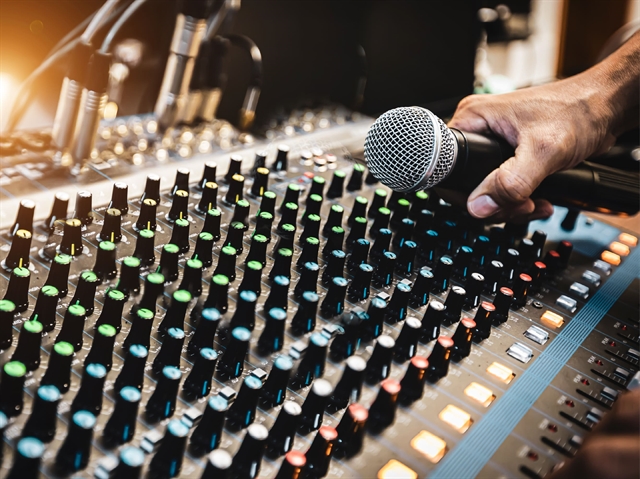Piezoelectric Transducers for Ultrasonic Flowmeters


Piezoelectric transducers are utilized in ultrasonic flow meters to measure and characterize the velocity, volume and/or mass flow of fluids and gases moving through a pipe. Capable of registering even slight changes to the substance in question, ultrasonic flow meters serve to monitor flow systems, immediately detecting potential malfunctions or leaks. For that reason, they are essential instruments for pipe setups such as water distribution networks.
How do ultrasonic flow meters work?
Ultrasonic flow meters use piezoelectric transducers to emit ultrasonic waves into the flow and subsequently register their echo. Depending on meter type, changes in the flow - as a result of for instance leaks or contamination - will manifest as either a change in frequency of a reflected wave or a change in the propagation time of an emitted wave. Operating frequency depends on the application and the speed of sound in the given flow medium. Generally, lower frequencies (100-200 kHz) are well suited for gases, whereas higher frequencies in the MHz range are the better choice for liquids.
Ultrasonic flow meter types: Doppler effect and transit time
There are two main types of ultrasonic flow meters: The Doppler meter and the transit time meter.
Doppler flow meters employ one, sometimes two, piezoelectric transducers, operating simultaneously as emitter and receiver of ultrasonic waves. When an emitted wave is reflected by a particle or bubble in the flow, its frequency will shift due to the relative speed of the particle – a phenomenon known as the Doppler effect. The greater the flow speed of the liquid/gas is, the greater the frequency discrepancy between the emitted and the reflected wave will be, and the Doppler flow meters use this information to determine the state of the flow. As it relies on the collision of sound waves and reflectors in the fluid, the Doppler flow meter is best suited to measure fluids rich in particles (e.g., slurries) or bubbles.
Transit time meters (also called "time-of-flight meters"), on the other hand, always employ pairs of piezoelectric transducers, alternatively operating as emitter and receiver. The transducers are generally placed diagonally to the direction of the flow. Due to the superposition of sound propagation speed and flow speed, the emitted ultrasonic waves will travel faster when moving in the same direction as the flow, and slower when moving in the opposite direction. By comparing the upstream and downstream transit time of the waves, the state of the flow can be determined. Transit time flow meters are best suited for measuring clear fluids with little to no solids in them which could otherwise scatter and hamper the waves.
Either meter type can be mounted on the outside surface of the pipe (clamp-on), making maintenance easier, or be partially submerged in-flow for a more precise reading. Certain other flow meter types such as open channel or vortex flow meters also utilize piezoelectric elements, but they operate according to different principles.


Which piezoelectric materials should be used for ultrasonic flow meters?
Ultrasonic flow meters usually incorporate bulk components made of a ”soft” piezoelectric material, characterized by a low mechanical quality factor which is important for transducers working in both actuator and sensor mode. Also, a highly sensitive material is preferable for maximizing the signal-to-noise ratio. CTS offers several optimized piezoelectric solutions for ultrasonic flow meters. Our NCE51 formulation is the ideal choice for transit time flow meters, displaying very stable acoustic properties over a wide temperature range with a maximum impedance decrease of 20 % and a maximum increase of 1 % in resonance frequency between 0-80°C. NCE56, on the other hand, provides even higher sensitivity and a wider bandwidth, making it a better fit for Doppler meters that rely on a weaker acoustic signal. A typical component design for ultrasonic flow meters is a disc with a diameter adapted to the section and a thickness tuned to the operating frequency (typically 0.5-2MHz for liquids).
| Property | Symbol | Unit | NCE51 | NCE56 |
|---|---|---|---|---|
| Relative Free Dielectric Constant (1kHz) | Kσ33 | - | 1900 | 2900 |
| Dielectric Dissipation Factor (1kHz) | tanδ | - | 0.015 | 0.014 |
| Curie Temperature | TC | °C | 360 | 242 |
| Mechanical Quality Factor | Qm | - | 80 | 75 |
| Coupling Coefficient | kt | - | 0.5 | 0.5 |
| Piezoelectric Charge Coefficient | d33 | pC/N | 443 | 580 |
Customization and value-add services for transducers
Our team of engineers work directly with customers, designing solutions that meet demanding specifications. Typical customizations and value-add opportunities for bulk discs in Doppler and transit time flowmeter applications are:
Electrode shaping: In place of standard plain electrodes, CTS can print a wrap-around electrode which allows for both electric contacts to be placed on the same side.
Transducer assembly and testing: CTS has extensive processing capabilities and can offer wiring, assembly and potting of transducers, providing a sub-system to facilitate integration in the final meter. We also perform testing of transducers under customer-specified operating condition with full traceability of test results.
Transducer design: Using FEM and physical prototyping, CTS can produce finished transducer designs for our own manufacturing line based on top level requirements.
June 22, 2023

Partner with a Piezoelectric Specialist
CTS can help decide on material properties to deliver products that meet the unique requirements of your project. Work with a technical expert to begin your design today.



